From the Field: Paola Pedraza-Peñalosa in the Colombian Andes
Posted in From the Field, Paola Pedraza-Peñalosa, Science on March 8 2011, by Plant Talk
Ed. Note: NYBG Scientist and Assistant Curator, Institute of Systematic Botany, Paola, Pedraza-Peñalosa recently returned from an expedition to the Colombian Andes where she was without electricity and the Internet. Upon returning to New York, she filed these briefs about her time in the field. Follow her journey on Plant Talk.
January 25, 2011; Arrival to Las Orquídeas National Park; Antioquia, Colombia
Las Orquídeas National Park is tucked into the westernmost mountain chain of Colombia, a part of the great Andean Cordillera. In the park the terrain is steep and rough and is crossed by many rivers and streams that originate in the upper part of the mountains. The constant presence of water makes these humid forests a source of abudant epiphytic plants. Epiphytes, like many bromeliads and orchids, are plants that grow on other plants without killing them. Epiphytes root in the humid mixture of mosses and decaying matter that cover the branches of the trees; they are a forest on top of the forest.
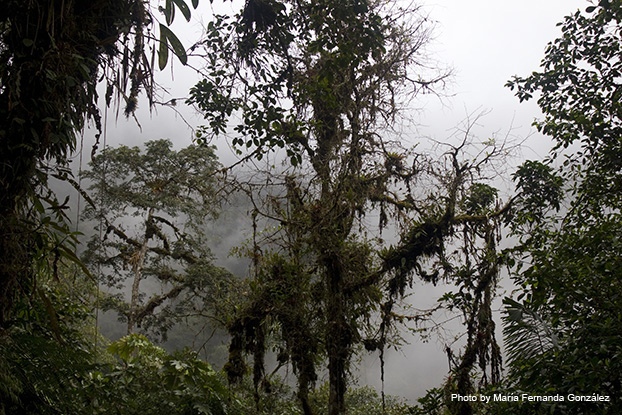
Orchids are such a prominent feature in this area that the park takes its name from them–Las Orquídeas–the park of the orchids. Here are two examples of some of the favorite orchids that we collected.
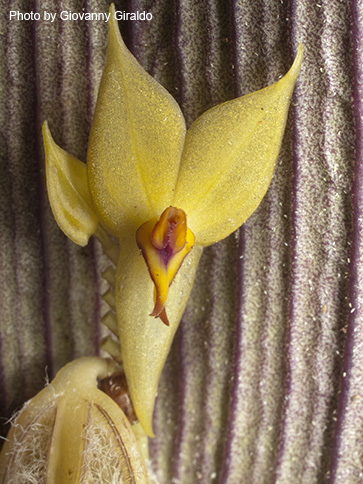
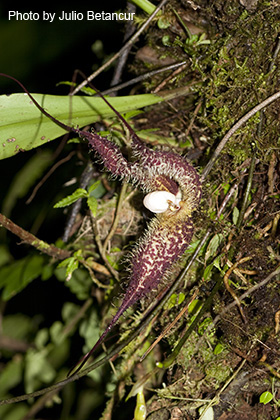
Although we were traveling during the less rainy season (locally known as summer), in western Colombia it always rains; there is no marked dry season. In fact some of the rainiest places in the world are found here. However, the weather throughout the entire trip was particularly good, with plenty of sunshine, daily (but not too cold) fog, and some rain (but only at night). With such good luck on our first day we woke up to an amazing sight, the humid premontane forests of northern South America.
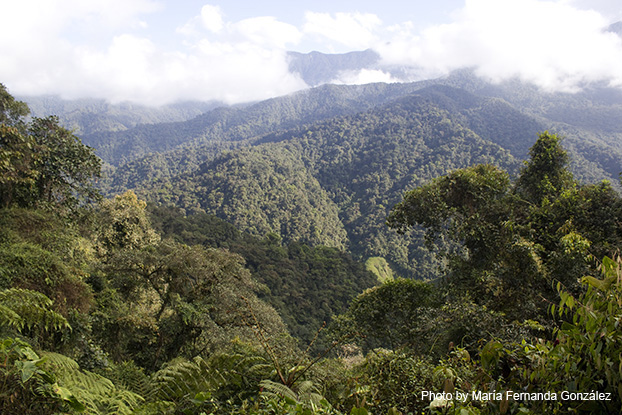
The first order of the day was to design a collecting plan and schedule. We wanted to see and collect everything; we wanted to go everywhere. That was when we realized that the field station was only right at the entrance of the park. After all the traveling we had done, we were still far from the heart of the reserve. Further in lay a world of unknown plants, places that no botanists had ever visited, relicts of disappearing paradises.
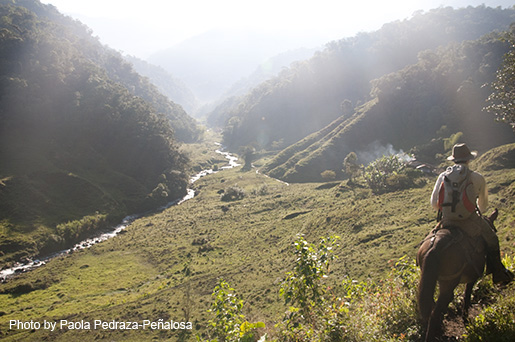
Acknowledgments: this project is funded by the National Science Foundation (NSF DEB 1020623). Photos courtesy of: Julio Betancur*, Giovanny Giraldo*, Fredy Gómez, María Fernanda González*, Paola Pedraza-Peñalosa. (Those marked with a * are affiliated with the Universidad Nacional de Colombia.)


To: Paola Pedraza-Peñalosa:
This looks like a fantastic adventure.
I supervise the Minnesota Biological Survey (have mostly plant ecology and botanical training). I have been to central and south america many times-often on my own or with small tours. The ecotours rarely feature plants or ecological systems specifically. Do you have suggestions about potential contacts in Columbia with whom I could either assist with collecting or merely get a small tour?
Thanks for you help, sincerely carmen converse
I recently hiked up the east slope of the andes (Ven) with andestropicales-very enjoyable but little botanical interpretation. Your suggestions would be appreciated.